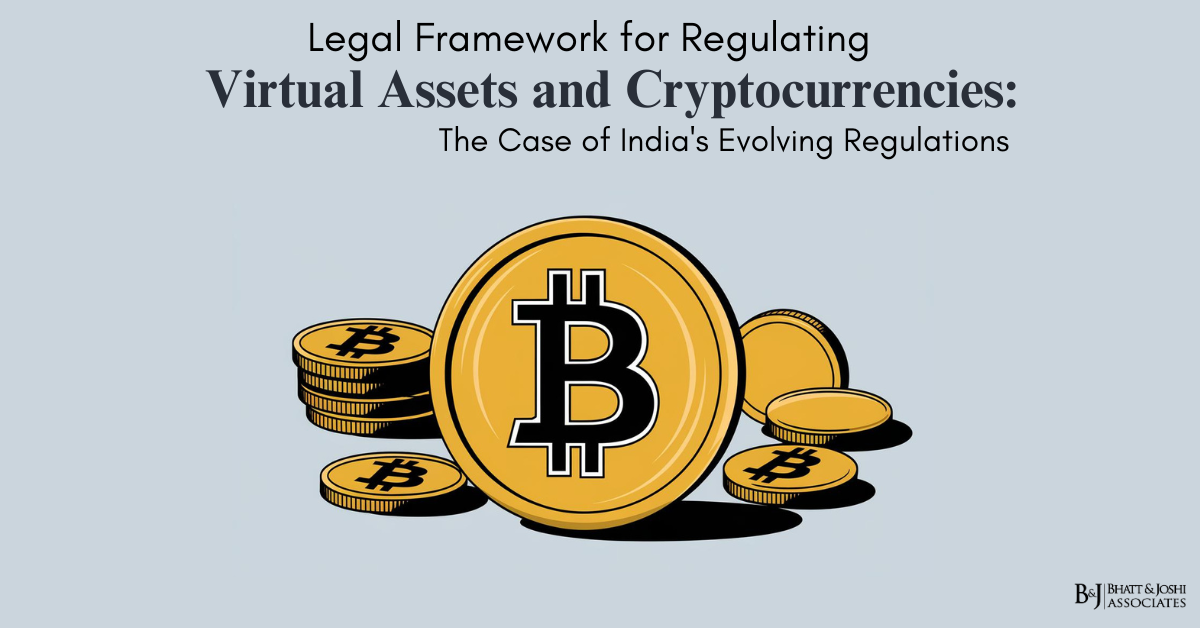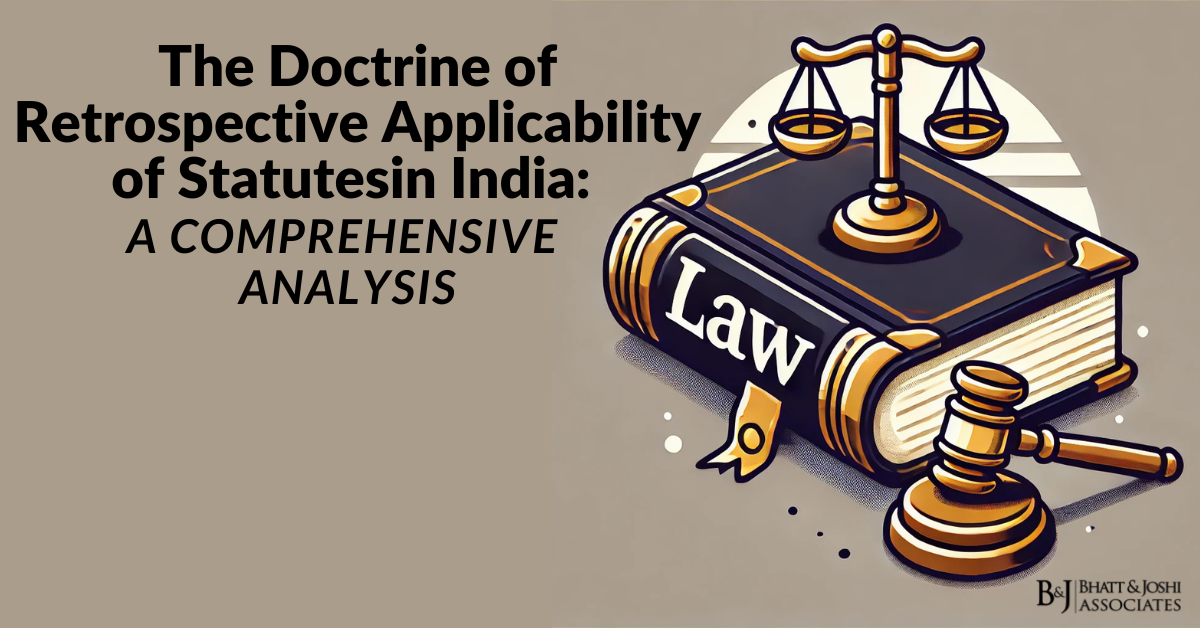Introduction
The rise of virtual assets and cryptocurrencies has revolutionized the financial landscape, presenting new opportunities for investment, innovation, and financial inclusion. These digital assets, which operate on decentralized blockchain technology, promise financial freedom by enabling transactions without intermediaries. However, the rapid growth of the sector has raised significant regulatory challenges globally, including in India. This article delves into the evolving legal framework for regulating virtual assets and cryptocurrencies in India, exploring the initial responses, judicial interventions, proposed legislative measures, and future directions.
The Emergence of Virtual Assets and Cryptocurrencies
Virtual assets and cryptocurrencies, such as Bitcoin, Ethereum, and a myriad of altcoins, have garnered immense popularity due to their decentralized nature, security features, and potential for substantial returns on investment. Unlike traditional fiat currencies issued by governments, cryptocurrencies are digital or virtual currencies that use cryptography for security and operate on blockchain technology. This technology ensures that transactions are transparent, immutable, and secure, making it a revolutionary tool in the financial sector.
The primary allure of cryptocurrencies lies in their ability to offer financial freedom, allowing users to engage in peer-to-peer transactions without the need for traditional banking intermediaries. This aspect has democratized financial systems, particularly in regions with underdeveloped banking infrastructure. However, the anonymity and ease of cross-border transactions provided by cryptocurrencies have also attracted illicit activities such as money laundering, terrorist financing, and tax evasion. These potential risks have prompted governments worldwide, including India, to consider comprehensive regulatory frameworks to oversee and control the burgeoning market.
Regulatory Landscape in India for Virtual Assets and Cryptocurrencies
India’s approach to regulating virtual assets and cryptocurrencies has been characterized by cautious optimism and evolving policy measures. The regulatory landscape in India has witnessed significant changes over the years, reflecting the government’s efforts to mitigate the risks associated with cryptocurrencies while fostering innovation and growth in the fintech sector.
Early Regulatory Responses
India’s initial response to cryptocurrencies was marked by skepticism and caution. In December 2013, the Reserve Bank of India (RBI) issued a circular warning users, holders, and traders of virtual currencies about the potential risks. The circular highlighted concerns related to security, volatility, and the lack of regulatory oversight. Despite these warnings, the popularity of cryptocurrencies continued to grow, prompting the RBI to adopt a more assertive stance.
In April 2018, the RBI issued another circular that effectively banned banks and financial institutions from providing services to individuals and businesses dealing in cryptocurrencies. This directive aimed to curb the use of cryptocurrencies for illicit activities and protect consumers from the associated risks. However, the ban also stifled the growth of the cryptocurrency market in India, leading to legal challenges from industry stakeholders who argued that the move was detrimental to innovation and financial inclusion.
Supreme Court Ruling and Regulatory Developments
A significant turning point in India’s regulatory approach came in March 2020, when the Supreme Court of India struck down the RBI’s 2018 circular, deeming it unconstitutional. The court’s ruling was based on the grounds that the circular disproportionately impacted the cryptocurrency industry and violated the principles of fairness and proportionality. The judgment was seen as a victory for the cryptocurrency community and paved the way for further regulatory developments.
Following the Supreme Court’s decision, the Indian government signaled its intention to introduce comprehensive legislation to regulate virtual assets and cryptocurrencies. The draft Cryptocurrency and Regulation of Official Digital Currency Bill, 2021, proposed by the Ministry of Finance, aimed to ban all private cryptocurrencies while allowing for the creation of an official digital currency issued by the RBI. The bill also included provisions for promoting blockchain technology and fintech innovation, reflecting the government’s recognition of the potential benefits of these technologies beyond cryptocurrencies.
The Cryptocurrency and Regulation of Official Digital Currency Bill, 2021
The draft Cryptocurrency and Regulation of Official Digital Currency Bill, 2021, represents a significant step towards regulating virtual assets and cryptocurrencies in India. The bill seeks to address the risks associated with cryptocurrencies while promoting the development of a robust regulatory framework. Key provisions of the bill include:
Ban on Private Cryptocurrencies: The bill proposes a ban on all private cryptocurrencies, with certain exceptions for promoting the underlying technology and its applications. This provision aims to prevent the misuse of cryptocurrencies for illicit activities and protect consumers from fraud and financial instability.
Creation of an Official Digital Currency: The bill empowers the RBI to develop and issue an official digital currency, which will be recognized as legal tender in India. The introduction of a central bank digital currency (CBDC) aims to enhance the efficiency and security of the payment system and provide a regulated alternative to private cryptocurrencies.
Promotion of Blockchain Technology: The bill includes provisions for promoting the use of blockchain technology and its applications in various sectors. This reflects the government’s recognition of the potential benefits of blockchain beyond cryptocurrencies, including supply chain management, digital identity verification, and smart contracts.
Regulatory Sandbox: The bill proposes the establishment of a regulatory sandbox to facilitate innovation and experimentation in the fintech sector. The sandbox will provide a controlled environment for testing new technologies and business models while ensuring regulatory compliance and consumer protection.
Challenges and Concerns
While the crypto draft bill represents a comprehensive approach to regulating virtual assets and cryptocurrencies, it has also raised several concerns and challenges:
Impact on Innovation: The proposed ban on private cryptocurrencies has been criticized for potentially stifling innovation in the blockchain and fintech sectors. Industry stakeholders argue that a more balanced approach, such as regulating and monitoring private cryptocurrencies, could foster innovation while addressing the associated risks.
Legal and Enforcement Challenges: Implementing a ban on private cryptocurrencies poses significant legal and enforcement challenges. Given the decentralized nature of cryptocurrencies, enforcing a ban could be difficult, and users may resort to peer-to-peer transactions or offshore exchanges to circumvent regulations.
Consumer Protection: Ensuring consumer protection in the rapidly evolving cryptocurrency market is a critical concern. The regulatory framework must include measures to prevent fraud, secure consumer funds, and provide recourse mechanisms for resolving disputes.
Financial Stability: The potential impact of cryptocurrencies on financial stability is another key consideration. Regulators need to assess the systemic risks posed by cryptocurrencies and develop strategies to mitigate these risks while allowing for the growth of the market.
Future Directions and Recommendations
To effectively regulate virtual assets and cryptocurrencies, India can consider several future directions and recommendations:
Balanced Regulatory Approach: Adopting a balanced regulatory approach that combines regulation, oversight, and innovation is essential. Rather than imposing an outright ban, the government can explore frameworks that regulate private cryptocurrencies while promoting their responsible use. This can include licensing requirements, anti-money laundering (AML) and know-your-customer (KYC) protocols, and robust monitoring mechanisms.
Public Consultation and Stakeholder Engagement: Engaging with industry stakeholders, experts, and the public is crucial for developing effective regulations. Public consultations can provide valuable insights into the challenges and opportunities in the cryptocurrency market and help shape policies that address the concerns of all stakeholders.
International Collaboration: Given the global nature of cryptocurrencies, international collaboration is vital for addressing cross-border challenges and ensuring regulatory consistency. India can work with international organizations, such as the Financial Action Task Force (FATF), to develop global standards and best practices for regulating virtual assets.
Financial Literacy and Consumer Education: Promoting financial literacy and consumer education is essential for empowering individuals to make informed decisions about virtual assets. Public awareness campaigns, educational programs, and resources can help consumers understand the risks and benefits of cryptocurrencies and navigate the market safely.
Leveraging Technology for Regulation: Leveraging advanced technologies, such as artificial intelligence and blockchain analytics, can enhance regulatory capabilities. These technologies can help regulators monitor transactions, detect suspicious activities, and ensure compliance with regulatory requirements.
Research and Development: Encouraging research and development in the field of blockchain and virtual assets can drive innovation and inform regulatory policies. Collaborating with academic institutions, research organizations, and industry experts can foster a deeper understanding of the technology and its implications.
The Global Perspective on Cryptocurrency Regulation
To understand India’s position within the global context, it is important to compare its regulatory approach with those of other leading economies. Countries such as the United States, the United Kingdom, Japan, and Singapore have all adopted varying strategies to manage the risks and opportunities presented by cryptocurrencies.
The United States has taken a fragmented approach, with different regulatory bodies like the Securities and Exchange Commission (SEC), the Commodity Futures Trading Commission (CFTC), and the Internal Revenue Service (IRS) playing roles in overseeing various aspects of the cryptocurrency market. This has led to a complex regulatory environment where clarity is still evolving.
In contrast, Japan has been more proactive, becoming one of the first countries to recognize Bitcoin as legal tender and implementing a licensing regime for cryptocurrency exchanges. This approach has helped Japan to foster innovation while maintaining stringent consumer protection standards.
Singapore, known for its forward-thinking regulatory environment, has also embraced cryptocurrencies through the Payment Services Act, which provides a comprehensive framework for the regulation of payment systems and digital payment token services. This has positioned Singapore as a hub for cryptocurrency businesses, balancing innovation with robust regulatory oversight.
The European Union is working on the Markets in Crypto-Assets (MiCA) regulation, which aims to provide a clear regulatory framework for cryptocurrencies across its member states. MiCA seeks to enhance consumer protection and ensure financial stability while fostering innovation in the digital finance sector.
The Role of Central Bank Digital Currencies (CBDCs)
Central Bank Digital Currencies (CBDCs) represent another important aspect of the evolving regulatory landscape for virtual assets. CBDCs are digital forms of fiat currency issued by central banks, offering the security and stability of traditional currencies with the technological benefits of digital payments.
India’s proposed introduction of an official digital currency by the RBI is in line with global trends, as several central banks around the world are exploring or piloting CBDCs. The People’s Bank of China has made significant progress with its Digital Currency Electronic Payment (DCEP) project, aiming to enhance the efficiency of the payment system and reduce the risks associated with private cryptocurrencies.
The European Central Bank (ECB) is also exploring the potential of a digital euro, which could provide a secure and efficient digital payment option for the eurozone. The United States Federal Reserve has been conducting research and consultations on the potential benefits and risks of a digital dollar, although it has not yet committed to issuing one.
CBDCs have the potential to revolutionize the payment landscape by providing a stable and secure digital alternative to private cryptocurrencies. However, their introduction also raises questions about privacy, the role of banks, and the potential impact on monetary policy.
Blockchain Technology Beyond Cryptocurrencies
While cryptocurrencies have garnered the most attention, blockchain technology itself offers a wide range of applications beyond digital currencies. Blockchain’s ability to provide secure, transparent, and tamper-proof records makes it a valuable tool for various sectors.
In supply chain management, blockchain can enhance transparency and traceability, helping to prevent fraud and ensure the authenticity of products. Companies like IBM and Maersk have developed blockchain-based solutions to streamline and secure global supply chains.
In the healthcare sector, blockchain can improve the security and interoperability of medical records, enabling better patient care and reducing administrative costs. Blockchain can also facilitate the secure sharing of research data and enhance the integrity of clinical trials.
Digital identity verification is another promising application of blockchain technology. By providing a decentralized and secure method of identity verification, blockchain can help to prevent identity theft and streamline processes that require identity verification, such as opening bank accounts or accessing government services.
Smart contracts, which are self-executing contracts with the terms of the agreement directly written into code, offer another innovative application of blockchain. These contracts can automate and enforce contractual agreements without the need for intermediaries, reducing costs and increasing efficiency.
Regulatory Challenges and Opportunities in the Fintech Sector
The fintech sector, which encompasses a wide range of financial technologies including cryptocurrencies, blockchain, and digital payments, presents both regulatory challenges and opportunities. Regulators must balance the need to protect consumers and maintain financial stability with the goal of fostering innovation and competition.
One of the key challenges in regulating the fintech sector is the rapid pace of technological change. Traditional regulatory frameworks may struggle to keep up with the innovations in fintech, requiring regulators to adopt more flexible and adaptive approaches.
Regulatory sandboxes, which provide a controlled environment for testing new technologies and business models, offer one solution to this challenge. By allowing fintech companies to experiment under regulatory supervision, sandboxes can help regulators to understand new technologies and develop appropriate regulatory responses.
Another challenge is the global nature of the fintech sector. Cross-border transactions and international collaborations are common in fintech, requiring regulators to cooperate and coordinate with their counterparts in other jurisdictions. International organizations like the Financial Action Task Force (FATF) and the International Organization of Securities Commissions (IOSCO) play a key role in fostering global regulatory standards and best practices.
The Future of Cryptocurrency Regulation in India
Looking ahead, the cryptocurrency future in India will depend on the government’s ability to balance innovation with risk management. While the draft Cryptocurrency and Regulation of Official Digital Currency Bill, 2021, represents a significant step forward, ongoing dialogue with industry stakeholders and international collaboration will be crucial.
By adopting a balanced regulatory approach, leveraging technology, and fostering a culture of innovation, India can position itself as a leader in the global cryptocurrency market. This will not only drive economic growth and financial inclusion but also enhance the country’s reputation as a forward-thinking and dynamic economy.
As the world of virtual assets continues to evolve, India’s regulatory framework must remain flexible and responsive to emerging trends and challenges. By embracing a proactive and collaborative approach, India can navigate the complexities of this emerging landscape and achieve its regulatory and economic goals.
Conclusion: Future of Virtual Assets and Cryptocurrencies Regulation in India
The evolving regulatory framework for virtual assets and cryptocurrencies in India reflects the complex and dynamic nature of this innovative sector. The draft Cryptocurrency and Regulation of Official Digital Currency Bill, 2021, is a crucial step towards establishing a comprehensive regulatory environment. However, the journey towards a balanced and effective regulatory framework is ongoing.
By focusing on balanced regulation, stakeholder engagement, international collaboration, financial literacy, and technological advancement, India can create a robust environment that supports innovation while mitigating risks. As virtual assets and cryptocurrencies continue to transform the global financial landscape, India’s proactive and adaptive regulatory approach will be key to harnessing the benefits and addressing the challenges of this emerging sector. The future of cryptocurrency regulation in India holds the promise of economic growth, financial inclusion, and technological advancement, provided it is navigated with foresight and collaboration.
As the world of virtual assets continues to evolve, India has the opportunity to position itself as a leader in the global cryptocurrency market. By embracing forward-thinking policies and fostering a culture of innovation and responsibility, India can harness the potential of virtual assets to drive economic growth, financial inclusion, and technological advancement. The journey towards a comprehensive and effective regulatory framework is ongoing, but with a proactive and collaborative approach, India can navigate the complexities of this emerging landscape and achieve its regulatory and economic goals.














